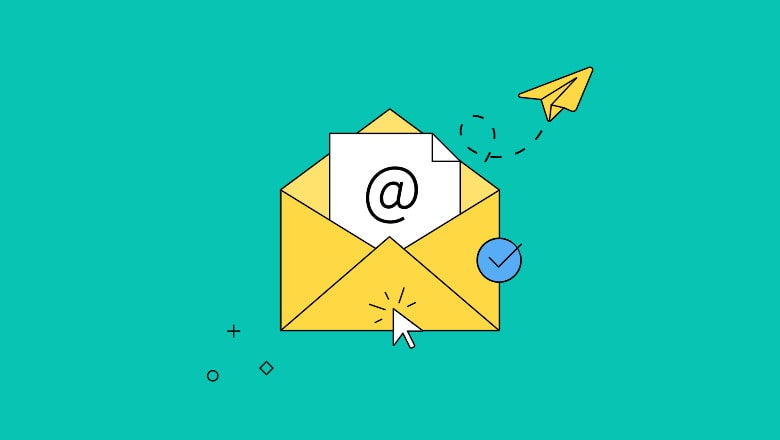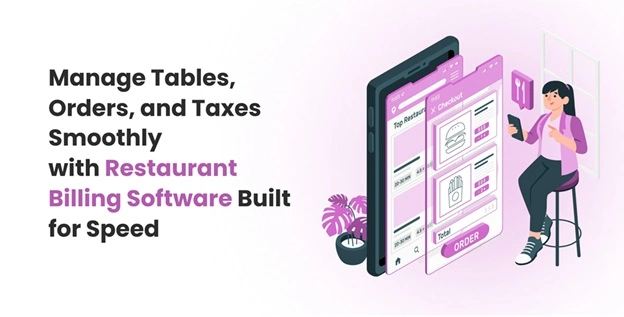Webinars are a fantastic way to do audience marketing, create brand authority ,and gain hot leads. However, successfully onboarding and converting a webinar audience to paying clients requires a well-planned email marketing funnel. Understanding where you’ll need to insert emails along the journey from before they register to after the event is the key to guaranteed engagement and conversions.
Understanding the Role of Email Marketing in Webinar Success
Email marketing serves as the backbone of webinar promotion and attendance. Emails not only inform potential attendees about the event but also maintain engagement, provide essential reminders, and nurture registrants along their journey. Using an email warm-up service before launching your campaign can improve deliverability and ensure your messages land in inboxes rather than spam folders. A carefully structured email funnel, designed to deliver targeted, relevant messages at strategic moments, maximizes registrations, ensures high attendance rates, and enhances post-webinar conversions, thus significantly boosting overall webinar ROI.

Crafting Compelling Webinar Invitation Emails
Effective webinar marketing begins with crafting a compelling invitation email. This email introduces the webinar clearly, highlighting its value proposition, outlining key takeaways, and establishing credibility through presenter expertise. The invitation must quickly capture attention, convey urgency or exclusivity, and include a straightforward, action-oriented registration call-to-action. A well-crafted invitation email sets the stage for high registration rates, creating initial excitement and anticipation around the webinar.
Boosting Webinar Registrations with Strategic Follow-Up Emails
Not all recipients respond immediately to a single invitation. Strategic follow-up emails play a critical role in driving additional registrations by reinforcing the webinar’s benefits, introducing compelling details, and creating urgency as the event approaches. Effective follow-ups address common barriers or objections, incorporate testimonials or social proof, and remind recipients of the limited-time opportunity, significantly boosting overall registration numbers through continued engagement and persuasive messaging.
Leveraging Confirmation Emails to Increase Attendance
Confirmation emails serve a dual purpose: verifying successful registration and ensuring high attendance rates. These emails should express appreciation for the registrant’s interest, clearly summarize event details, and provide easy calendar integration options. Confirmation emails are also opportunities to set expectations clearly, share valuable pre-webinar resources, or ask attendees to share event details with their networks, thereby further increasing engagement and attendance likelihood.
Maximizing Attendance with Effective Reminder Emails
Reminder emails are crucial for ensuring registered participants attend the webinar. Typically sent at strategic intervals one week prior, one day before, and again a few hours before the event these emails reinforce essential event details and sustain anticipation. Effective reminders clearly communicate urgency, emphasize the webinar’s unique value, and simplify access through prominently positioned joining instructions. Thoughtful, timely reminders significantly improve attendance rates, directly influencing webinar success.
Enhancing Webinar Experience with Pre-Event Engagement Emails
Pre-event engagement emails offer additional opportunities to enhance attendees’ anticipation and improve webinar experiences. These emails might include short introductory videos, downloadable resources, polls, or interactive content, actively engaging registrants and creating a sense of community before the event even begins. By fostering deeper pre-event connections, marketers increase attendee commitment, ensuring active participation during the webinar and significantly enhancing overall event outcomes.
Using Immediate Follow-Up Emails to Sustain Post-Webinar Momentum
The period immediately following the webinar presents critical opportunities for continued engagement. Immediate follow-up emails expressing gratitude for attendance, summarizing key takeaways, and providing links to recordings or additional resources reinforce event value. Prompt, thoughtful follow-up emails sustain attendee interest and capitalize on webinar enthusiasm, effectively bridging the gap between the event and subsequent nurturing or sales-focused communications.
Converting Attendees into Customers with Nurturing Sequences
Post-webinar nurturing email sequences systematically convert attendees into customers. These sequences strategically address attendee needs, highlight additional relevant content or offers, and gently guide recipients toward further engagement or conversion actions. Effective nurturing emails reinforce webinar topics, provide targeted solutions to attendee challenges, and progressively deepen relationships, directly contributing to higher conversion rates, increased customer lifetime value, and sustained marketing success.
Re-engaging Non-Attendees Through Strategic Emails
Webinar registrants who did not attend remain valuable leads. Re-engagement emails targeted specifically toward non-attendees provide access to recordings, key takeaways, or alternative opportunities to engage. Expressing understanding for missed attendance, while clearly emphasizing ongoing availability of content, demonstrates thoughtful consideration, encouraging continued engagement. Such strategic communications effectively recapture lost opportunities, converting initial interest into valuable ongoing relationships and potential future conversions.
Measuring and Optimizing Your Webinar Email Funnel
Evaluating the success of your email marketing funnel involves tracking specific metrics beyond basic attendance and registration numbers. Metrics such as open rates, click-through rates, attendance percentages, and conversion outcomes provide deep insights into funnel effectiveness. Regularly analyzing these metrics enables marketers to identify successful strategies, detect bottlenecks, and continually optimize email communications. Comprehensive funnel analysis ensures sustained improvements, increased attendee satisfaction, and continuously enhanced webinar performance.
Common Mistakes to Avoid in Webinar Email Marketing
Despite best intentions, marketers can inadvertently compromise webinar success through common mistakes, such as overwhelming subscribers with excessive emails, unclear messaging, inadequate reminders, or insufficient follow-ups. Additionally, neglecting personalization or relying on generic templates often reduces engagement effectiveness. Recognizing and proactively avoiding these common pitfalls ensures emails remain relevant, engaging, and effective throughout the entire webinar funnel, significantly enhancing attendee experiences and improving long-term outcomes.
Email Automation to Support Webinar Email Success
Implementing a webinar funnel would not be as successful without portions of email automation to fulfill the process. Automating emails allows for immediate sending with little human interaction, personalization, and segmentation of the right people. Email automation allows for invitation releases, reminder follow up thank you’s or resources, and more during legal nurturing processes with ease. Less room for human error is ensured within automated systems and attendee experiences are exponentially increased when proper email correspondence is sent within a timely fashion. Therefore, utilizing email automation supports funnel success, increases the percentage of successful webinars over time and makes overall marketing efforts effective ten fold.
Webinar Emails Need To Fit In With Overall Marketing Goals
Webinar email funnels can only be successful when they fit into the overall marketing goals and strategies of a brand. For example, these emails should always reflect important brand messaging, should support larger campaigns ongoing across other platforms and should tie into goals for the business whether it be lead generation, product launches, corporate education opportunities, etc. When they fit into the overall marketing goals and strategies of any given initiative, it creates consistent messaging, builds trust among subscribers and elevates strategic use potential for webinars with larger marketing goals to increase effectiveness and ROI of all marketing efforts.
Adapting Your Webinar Email Funnel for Long-Term Success
The effectiveness of webinar email funnels relies on ongoing adaptation to audience feedback, shifting market conditions, and evolving subscriber expectations. Marketers must continuously evaluate funnel performance, regularly updating and refining email content, timing, and strategies. This proactive, iterative approach ensures sustained effectiveness, allowing marketers to continually deliver engaging, valuable webinar experiences, consistently driving high attendance, deeper engagement, and substantial long-term marketing success.
Incorporating Social Proof in Webinar Emails for Higher Credibility
Incorporating social proof into your webinar-related emails significantly boosts credibility and trust among potential attendees. Highlighting testimonials, participant feedback from past webinars, expert endorsements, or showcasing the number of registrations already secured encourages hesitant subscribers to join. Social proof effectively alleviates uncertainty by validating the webinar’s value and popularity, enhancing recipient confidence, driving higher registrations, and improving overall attendance and engagement levels.
Enhancing Webinar Emails with Interactive Elements
Adding interactive elements to webinar emails significantly elevates subscriber engagement, dramatically enhancing overall funnel performance by transforming traditionally static communications into dynamic and immersive experiences. Features such as countdown timers, interactive polls, brief surveys, teaser quizzes, or embedded video clips actively involve subscribers, effectively capturing their attention and stimulating curiosity. These engaging features generate genuine excitement and anticipation for the upcoming event, motivating recipients to take immediate action, such as registering promptly, sharing event details, or interacting further with provided content.
Interactive email components do more than simply entertain; they establish a deeper sense of participation and ownership among potential attendees before the webinar even begins. For instance, interactive polls allow subscribers to voice opinions, influencing webinar content and making them feel heard and valued. Countdown timers clearly highlight urgency and visually reinforce the importance and exclusivity of the webinar, enhancing perceived value. Similarly, teaser quizzes or brief surveys serve the dual purpose of engaging recipients and collecting valuable insights into subscriber interests and expectations.
Furthermore, interactive elements in webinar emails significantly strengthen attendee commitment, reducing the likelihood of no-shows. By creating a more engaging pre-event experience, marketers build anticipation, setting expectations for an equally interactive and valuable webinar. This heightened engagement not only improves attendance rates but also encourages active participation during the webinar itself, facilitating richer audience interaction and higher satisfaction levels.
Leveraging these engaging email elements effectively enriches the overall webinar experience, creating memorable impressions that extend beyond the event itself. Interactive emails help build stronger emotional connections with the audience, positioning the brand as innovative, attentive, and committed to delivering genuine value. Ultimately, incorporating interactive features into webinar emails leads to increased attendance, deeper attendee relationships, higher conversion rates, and sustained marketing success, solidifying webinars as powerful, highly engaging components within the broader marketing strategy.
Final Thoughts: Mastering Your Webinar Email Marketing Funnel
Mastering email marketing for webinars involves comprehensive strategic planning, meticulous execution, and ongoing optimization at every stage of the webinar funnel. Successful webinar marketing extends far beyond simply sending invitations; it includes carefully structured reminder sequences, strategic pre-event engagement emails, compelling post-event follow-ups, and highly targeted nurturing campaigns. Each carefully crafted email within this funnel significantly influences the audience’s perception, engagement level, and overall webinar success, directly impacting attendance rates, participant satisfaction, and conversion outcomes.
Effective marketers understand that webinars serve as more than standalone events they are integrated, strategic experiences capable of building deeper relationships, generating qualified leads, and fostering long-term customer loyalty. Thoughtfully designed email communications deliver consistent messaging, clearly communicate webinar value, address common attendee pain points, and inspire action at each stage. Precise audience segmentation and personalization ensure emails resonate authentically, enhancing relevance and significantly increasing engagement.
Furthermore, by email each campaign can analyze its success for incremental changes thanks to constant improvement via campaign performance metrics. Open rates, clicks, attendance, and post-webinar sales all provide data points that give marketers information on what high performance means over time. Therefore, an email is all the more relevant, timely, and helpful when assessing how another email did in the first place. By using time to reflect on whether an email did good (or bad), and using that data to project, predict, and plan for the subsequent email, marketers can always be one step ahead of their audiences for continued success.
Thus, businesses can turn webinars from one-off marketing forays into reliable revenue generators with a developed funnel and effective positioning. For example, if a funnel can provide what’s promised, a webinar email funnel can showcase a brand’s expertise in the industry, foster loyalty from subscribers, generate quality leads through relationship-building, and convert curious parties into paying customers. Therefore, webinars become part of a larger marketing and sales strategy intentionally instead of just another new offering.
Ultimately, marketers who carefully plan, execute and refine their webinar email funnels from start to finish will not only experience increased attendance and engagement in the moment but also a strong, long-term marketing presence for anything related to webinars. Purposeful, email-based communication cultivates relationships, builds satisfaction and retention so that webinars will be a reliable customer engagement tool for years to come with the stabilized marketing champion it needs for the company.

